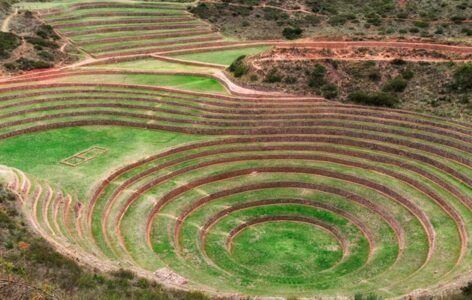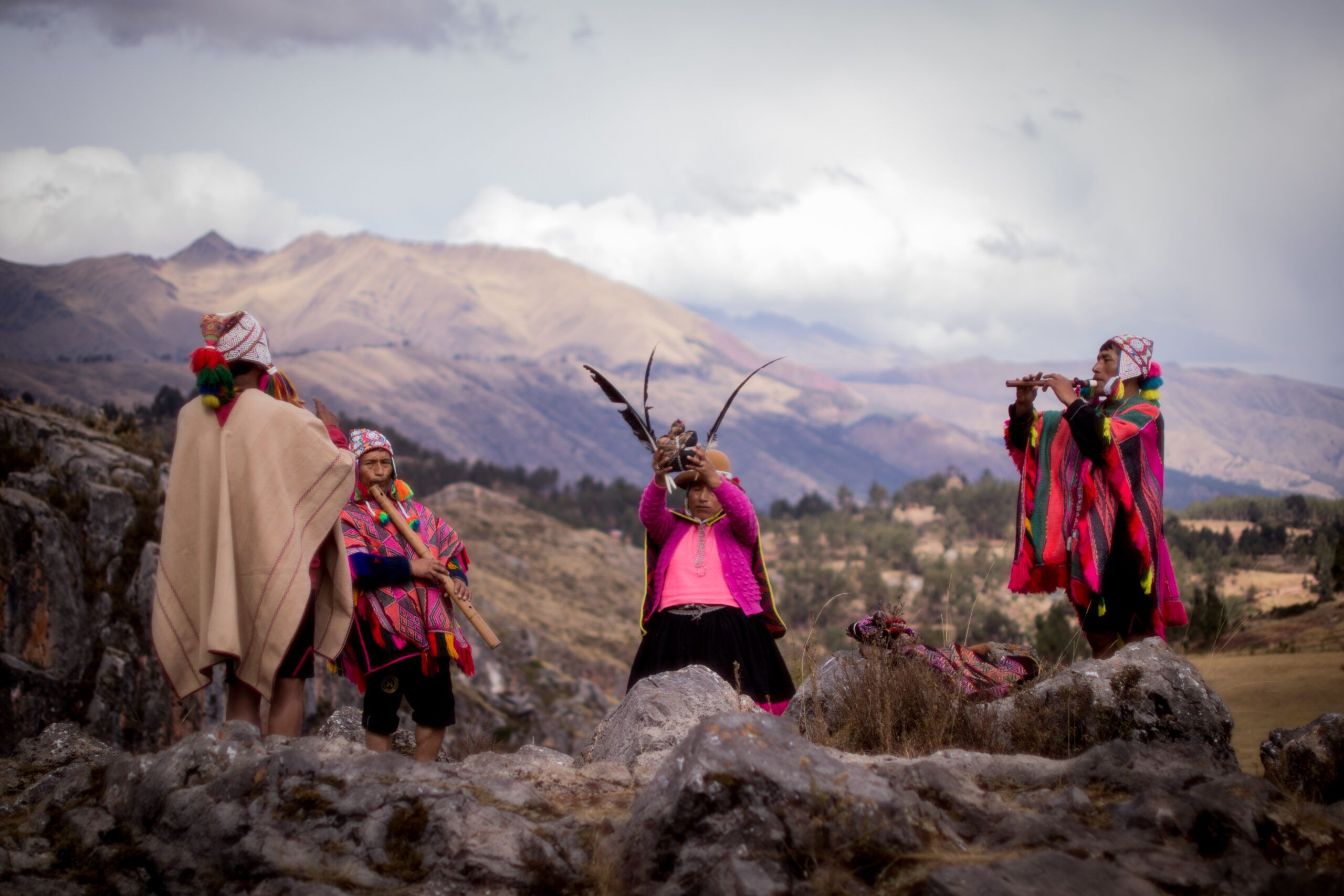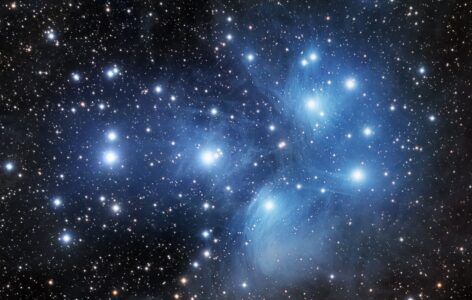In the heart of the Cusco highlands, Moray unfolds like a mandala carved into the living body of Pachamama. From above, its concentric terraces resemble the ripples of water expanding from a sacred drop, each circle an echo of time, reciprocity, and breath.
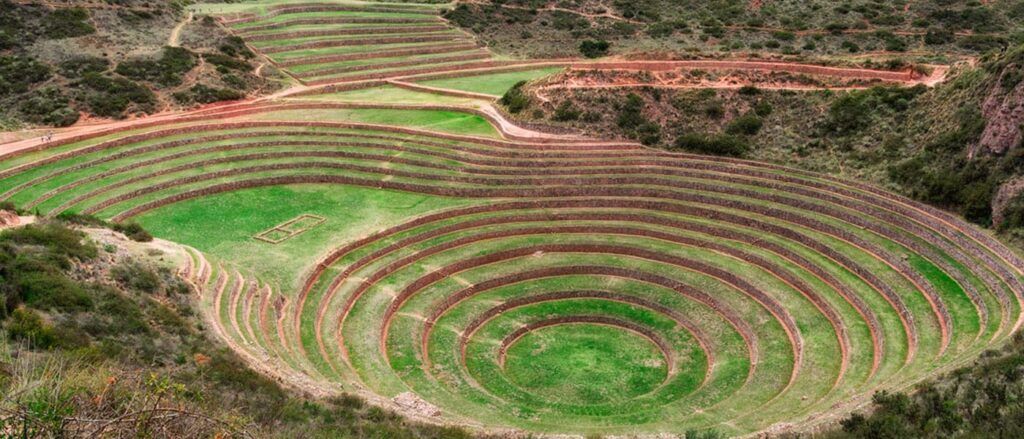
To the modern eye, Moray may appear as an agricultural experiment, but to the ancient Incas, it was a living temple, a dialogue between science and spirit, between the Kawsay of the Earth and the wisdom of the sky.
The Living Geometry of Moray
Archaeological research has revealed that Moray’s terraces functioned as a complex system of microclimates, allowing the Incas to study the growth of diverse crops under different environmental conditions (Moseley, 2001).
Temperature variations of up to 15°C between the upper and lower rings demonstrate a remarkable understanding of ecological diversity.

Yet beyond experimentation, Moray’s circular architecture reflects a cosmological principle: yanantin, the harmony of complementary opposites that sustains life. For the Andean mind, geometry was not abstract—it was alive.
The circular design mirrors the cycles of the sun and moon, the return of the seasons, and the breathing of the cosmos itself.
As Bauer (1998) notes, Inca sacred sites were built not merely for utility, but as mirrors of celestial order, mapping the union between Hanaq Pacha, Kay Pacha, and Uku Pacha.
The Architecture of Reciprocity in Moray
Each terrace of Moray represented more than an ecological layer, it embodied the law of ayni. To plant a seed was to enter a covenant with Pachamama, giving nourishment in exchange for life.

The Geometry of Reciprocity
Seen from above, Moray’s perfect circles suggest a sacred geometry aligned with the principles of balance and flow. The design evokes the spiral, a universal symbol of evolution and return.
As Reinhard (2007) points out, Inca ceremonial architecture often reflected natural forms: spirals of rivers, whirls of wind, or the turning of constellations. Moray thus stands as a geometry of ayni, a visual and spatial expression of the reciprocity that sustains all life.
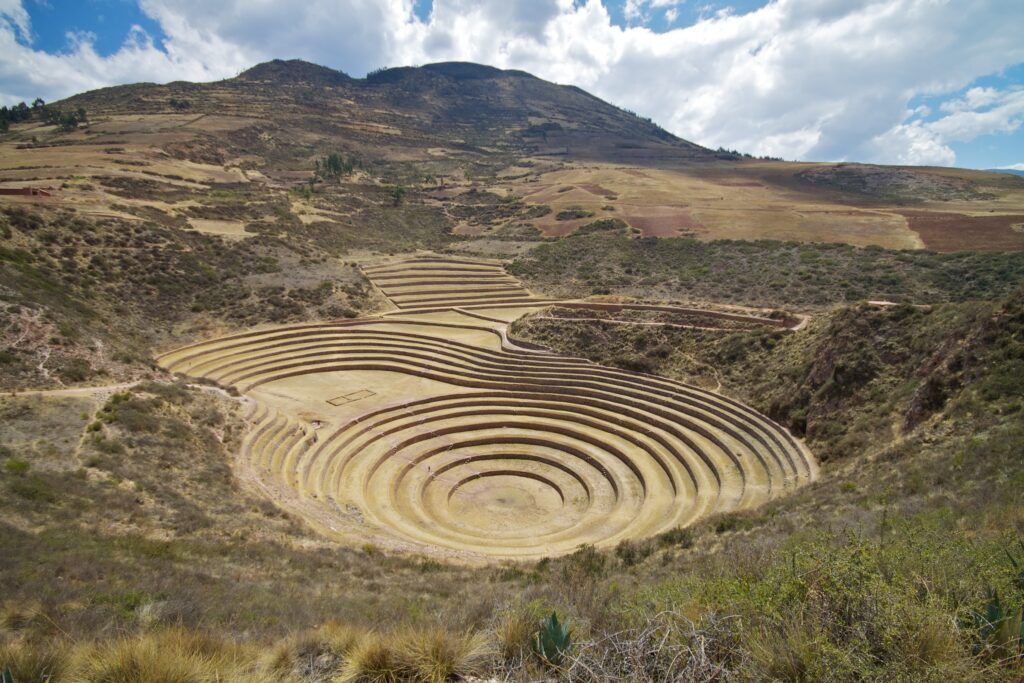
Dean (2010) interprets such architectural forms as “living stones”, structures through which the Incas gave body to their cosmology.
In this view, Moray was not a passive field but a pulsating organism, participating in the exchange of energies between humans and the Apus.
The terraces may even have served as a symbolic descent into Uku Pacha, inviting initiates to journey inward as they moved toward the center.
The terraces also align with solar and cardinal orientations, echoing the Incas’ ritual calendar and their observance of solstices. Such alignment reveals the deep relationship between Moray’s design and the cosmic order, a reminder that the Andean world was not divided between science and spirit, but unified through purpose.
A Living Map of Consciousness
Today, as we walk through Moray’s descending terraces, we move not only through space but through consciousness itself.
Each level becomes a threshold, a reminder that human life, like the terraces, is sustained by relationship, not domination. Moray remains a sacred mirror, inviting us to rediscover ayni within ourselves and with the world that breathes us.

To the Inca, the Earth was not property but kin. Moray endures as a testimony to that wisdom: the understanding that every act of cultivation is an act of reverence, and that true growth happens only in reciprocity.
References
- Bauer, B. S. (1998). The Sacred Landscape of the Inca: The Cusco Ceque System. University of Texas Press.
- Dean, C. (2010). A Culture of Stone: Inka Perspectives on Rock. Duke University Press.
- Moseley, M. E. (2001). The Incas and Their Ancestors: The Archaeology of Peru. Thames & Hudson.
- Reinhard, J. (2007). The Sacred Mountains of the Andes: Rituals and Cosmology. Mountain Institute.

